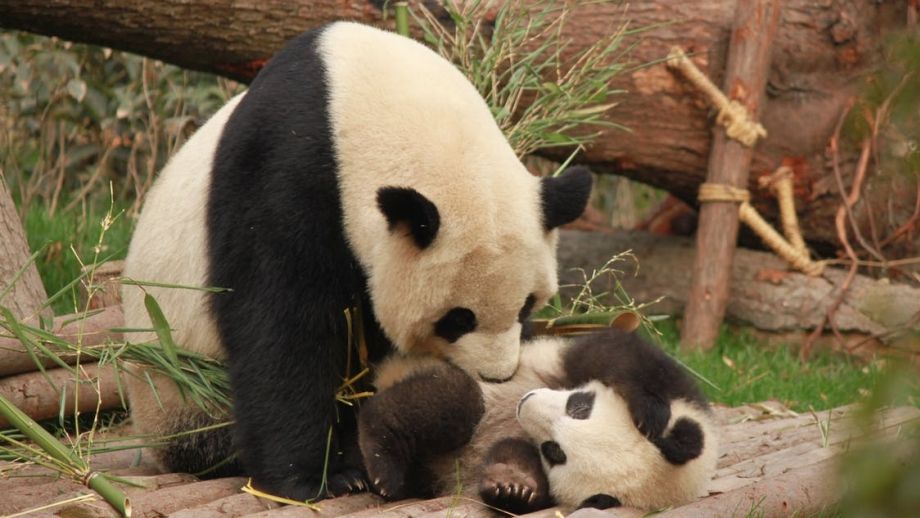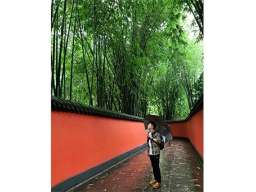Museum and Heritage in China's spice capital

Master of Museum and Heritage Studies student Edmond Lai participated in the Culture and Heritage in China Field School just recently, conducted by the ANU and Sichuan University in China. Edmund spent two weeks in Chengdu, Sichuan where he experienced Chinese cultural heritage and observed museum and heritage practices of China.
I have been fond of exploring different cultures and heritage since I was young, and this is why I also love travelling so much. Through visiting museums, art centres, and heritage sites in different countries, I have been able to glean insights into the mindset of different people from specific times and places, including their beliefs, imaginations, and traditions. Although I’m Chinese, I’ve lived in Hong Kong and Canada since birth and never been to mainland China. Consequently, I honestly didn’t have much knowledge about Chinese heritage, which includes the unique cultures of 56 ethnic groups. So I was very excited when I found out that I could travel to Sichuan, where five World Heritage Sites are located, for the first time to learn and gain a deeper understanding of the local cultures and traditions.
Chinese Culture and Heritage in Sichuan
As one of the largest provinces in China, Sichuan was the home of the ancient states of Ba and Shu, and was the temporary capital of the Republic of China during the Second World War. It hosts various ancient sites such as the Wu Hou Shrine, the famous Chinese poet Du Fu’s Thatched Cottage, and the Jinsha archaeological site where the ‘Sun and Immortal Bird’ gold ornament (dating back to around 1000 BC) was excavated.
When our field school group visited, we noticed that while ancient streets like Jinli and Kuan Zhai Alley had been revitalised and populated by tourists and souvenir shops, many local intangible heritage practices and products have been retained and were able to be experienced and consumed by tourists. It was interesting to see how the ancient architectures, traditional practices, and street food have blended with modern bits and pieces, showing the influences of globalisation and modernisation on safeguarding Chinese local cultural heritage.
One weekend when there were no classes to attend, a few classmates and I went on a getaway tour to the countryside to visit the Leshan Grand Buddha World Heritage Site. The 71-metre tall stone Buddha, carved out of a cliff of a mountain, really knocked our socks off. We went down to the bottom of the Buddha through a narrow path along the cliff and then climbed back up to the top by stairs, huffing and puffing. Not only did we feel the magnificence of the Buddha by undertaking such a ‘pilgrimage’, but we were also able to learn the importance of Buddhism and religion within Chinese culture.
A highlight of the field school was getting to see the fabulous giant pandas at the Chengdu Research Base of Giant Panda Breeding. It may sound a bit weird, but these cute creatures are definitely a natural heritage of China and the entire world. I knew that observing, learning, and critically reflecting on the museum and heritage practices adopted in China should be the main focus of this course, however I would say that seeing the giant pandas in close distance might be my best memory of the two-week field school. To conclude our trip, we were invited to a special screening of a documentary on efforts made by a Chinese musician to safeguard the folk music and oral histories of ethnic minorities by incorporating them into his productions, which was very inspiring.
Throughout the entire trip, I was tasked with being the translator for a few of my Australian classmates. Although I have been speaking both mandarin Chinese and English for more than 20 years, I was unable to explain many specific terms and words about the Chinese religion and ethnic cultures in English. I further realised that language is undoubtedly a barrier to effective communication between people with different cultural backgrounds, and thus it may sometimes be difficult for people to understand the significances and unique meanings of the heritage of another country or cultural group. Nevertheless, I believe that experiences such as visiting heritage sites and participating in local cultural activities contribute to a large part of one’s appreciation and understanding of another culture.
Eating, Eating, and Eating
Prior to arriving in Chengdu, local Sichuan cuisine was what all my fellow classmates and I were looking forward to. After all, we were going to spend two weeks and have three meals per day in Chengdu. Being one of the four paradigms of Chinese cuisine, Sichuan food enjoys a high reputation across the entire Chinese state and even around the whole world, especially for its spiciness resulting from the unique flavour of the commonly used Sichuan pepper. As a bonus, the prices of the feasts we had were much cheaper than you can imagine if you are used to the restaurants in Canberra.
With the recommendations provided by local students of the Sichuan University, we tried a wide variety of local cuisine ranging from the famous Sichuan spicy hot pot, spicy diced Kung Pao Chicken, Mapo Tofu, to desserts like the Bingfen ice jello. I was already asking about what we would have for lunch and dinner right after I finished breakfast each day. Personally, my favourite dish was the Maoxuewang which is a spicy soup cooked with duck meat, blood jelly, some seafood, and vegetables. A few students were brave enough to try local snacks like rabbit heads and frogs while others – including me – just stood aside and watched.
Despite the fact that we also had classes to learn the Chinese arts like traditional calligraphy and paper cutting, local Sichuan cuisine became the one intangible cultural heritage element we cared about the most.
Exchanges with Chinese Students
Some may have the perception that it could be difficult to communicate with Chinese students about contemporary issues relating to politics, including Chinese museum and heritage practices, due to their limited access to information on the Internet. Surprisingly, when we attended lectures with local students of the Sichuan University, they actively participated in our discussion about how heritage conservation was influenced by the politics and urbanisation desires of the Chinese local authorities and the Central Government. By exchanging opinions, we were able to explore various issues regarding heritage conservation and interpretation, authenticity of heritage, ethno-tourism development, identity-making, and internal orientalism from a Chinese perspective. It wasn’t just about doing site visits; it was important to connect and engage with local students so we could rid ourselves of the stereotypes we held and prejudice. Sichuan University is renowned for its education in anthropological and religious studies, and I am truly grateful for even the limited time that I had to study with Chinese local students who have a great interest and passion for the museum and heritage field.
For people interested in cultures and heritage who want to learn about a place they’re unfamiliar with, I really suggest visiting the place. As a student of the ANU, field schools are the perfect opportunity to travel to a new place and to understand and critically engage with local people and their unique cultural heritage. The experience you can get from a field school is one that you can’t acquire through normal academic courses.









